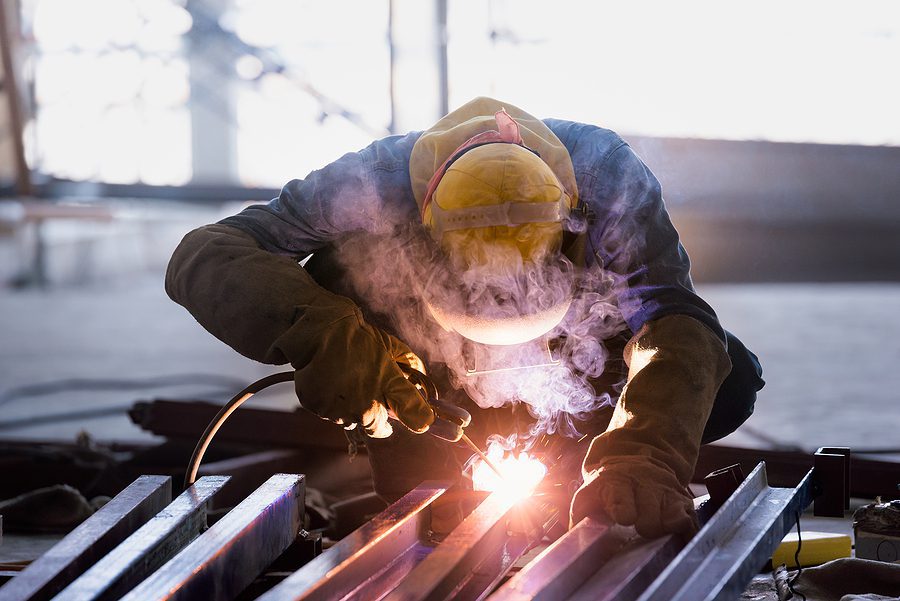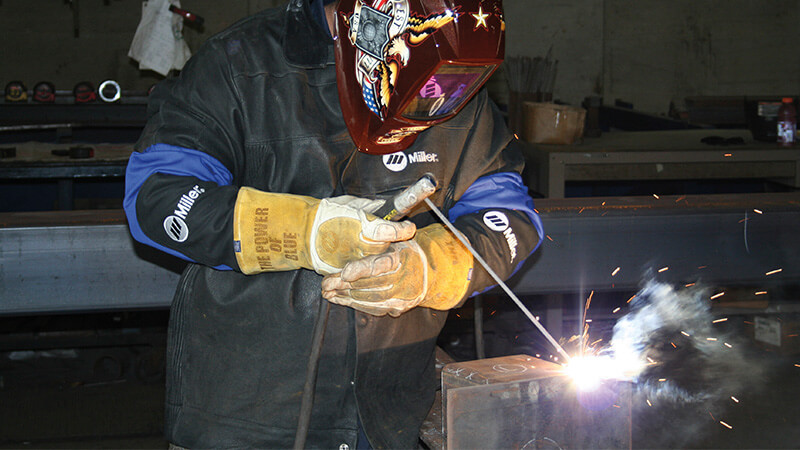Typical Welding Repair Work Issues and Just How to Address Them Properly
Welding fixings typically experience a series of concerns that can endanger the stability of the final product. Common issues include inadequate infiltration, porosity, and misalignment, to name a few. Each issue offers unique challenges that call for specific techniques for resolution. Recognizing these issues is important for welders aiming to boost their skills and end results. This discussion will discover these typical welding repair service issues and effective approaches to resolve them.
Insufficient Penetration
Poor infiltration takes place when the weld steel fails to fully fuse with the base product, causing weak joints and prospective structural failures. This concern often comes from insufficient heat input, wrong electrode angle, or incorrect welding rate. Welders may experience insufficient infiltration due to a mistake of the essential parameters for a details material density or type. In addition, contamination on the base product's surface area can hinder effective bonding, aggravating the problem. To attend to insufficient infiltration, welders should guarantee suitable settings on their tools and maintain a clean job surface area. Routine examination of welds is recommended to recognize any kind of shortages early, enabling prompt corrections and the prevention of jeopardized architectural stability in bonded settings up.
Porosity
Porosity is a common problem in bonded joints that shows up as small gas bubbles trapped within the weld metal. This flaw can endanger the honesty of the weld, causing decreased stamina and potential failing under tension. Montana Mobile Welding and Repair Belgrade Welding. Porosity normally emerges from contamination, moisture, or inappropriate welding techniques, which permit gases to get away into the liquified weld pool. To address porosity, welders need to guarantee appropriate surface area preparation, keep a tidy workplace, and use suitable welding parameters. Additionally, choosing the right filler material and protecting gas can minimize gas entrapment. Normal evaluation and testing of welds can assist recognize porosity early, assuring prompt corrective actions are taken, therefore preserving the quality and integrity of the bonded structure
Imbalance
Misalignment in welding can arise from different aspects, consisting of incorrect arrangement and thermal expansion. Recognizing the origin is vital for efficient resolution. A number of correction techniques are offered to straighten components and ensure structural honesty.
Root causes of Misalignment
Welding misalignment frequently originates from a variety of underlying issues that can endanger architectural stability. One primary reason is inappropriate fit-up of elements prior to welding, which can cause voids and unequal surfaces. Variants in thermal expansion throughout the welding process can also result in distortion, specifically if the materials being signed up with have different coefficients of development. Furthermore, inadequate fixturing and securing may fall short to hold elements firmly in position, causing movement throughout welding. Poorly conserved devices, including welding makers and devices, might introduce inconsistencies in the weld grain, further adding to misalignment. Driver mistake, stemming from not enough training or experience, can additionally play a considerable duty in producing misaligned welds.

Correction Strategies Available
Addressing misalignment properly requires a combination of corrective methods tailored to the certain issues handy. One common approach is the usage of jigs or components to hold elements in the appropriate setting during welding, ensuring constant alignment. Additionally, pre-heating the products can help in reducing distortion and boost fit-up. For significant imbalance, mechanical adjustment techniques, such as utilizing hydraulic jacks or clamps, can be employed to fix the position before welding. Post-weld warmth therapy may additionally be needed to relieve anxieties brought on by imbalance. Mindful evaluation and modification during the setup phase can prevent imbalance concerns from coming to be substantial issues, promoting a smoother welding process and improving overall structural honesty.
Distortion
Distortion is a typical obstacle in welding that can develop from different factors, consisting of uneven heating & cooling. Recognizing the root causes of distortion is important for applying reliable avoidance strategies. Addressing this issue not just boosts architectural stability however also improves the overall top quality of the weld.
Root causes of Distortion
When subjected to the extreme heat of welding, materials often undergo adjustments that can lead to distortion. This sensation primarily occurs from thermal growth and contraction throughout the welding process. As the weld location warms up, the product broadens; upon cooling, it acquires, which can develop inner stresses. Additionally, irregular heating across a work surface can intensify these tensions, resulting in bending or flexing. The type of product additionally plays a considerable function; metals with varying thermal conductivity and coefficients of development might respond in different ways, causing unforeseeable distortions. Moreover, inadequate joint design and inadequate fixturing can add to misalignment during welding, increasing the chance of distortion. Understanding these reasons is crucial for efficient welding repair and prevention methods.
Avoidance Techniques
Efficient prevention methods for distortion during welding emphasis on regulating warmth input and making certain appropriate joint style. Preserving a consistent warm input aids to reduce thermal development and tightening, which can bring about distortion. Making use of strategies such as pre-heating the work surface can also reduce the temperature gradient, promoting consistent heating. In addition, selecting proper joint designs, such as T-joints or lap joints, can enhance stability and minimize tension concentrations. Implementing proper fixturing to safeguard the work surfaces in location even more help in maintaining electrode positioning throughout the welding process. Ultimately, staggered welding sequences can disperse heat extra evenly, stopping local distortion. By using these methods, welders can significantly reduce the likelihood of distortion and improve the total top quality of their welds.
Fracturing
Breaking is a common problem run into in welding repairs, commonly resulting from different variables such as improper cooling prices, material choice, or poor joint prep work. The event of splits can substantially compromise the integrity of the weld, causing possible failings throughout operation. To address this problem, welders need to first examine the source, making sure that materials work and appropriately chosen for the particular application. Additionally, managing the air conditioning rate throughout the welding process is necessary; rapid cooling can cause tension and lead to cracking. Correct joint layout and preparation additionally add to lessening the threat. Applying these techniques can boost weld high quality and toughness, ultimately lowering the chance of fracturing in completed weldments.
.jpeg?width=1200&height=675&name=Mold%20Repair%20Welding%20Image%20(1).jpeg)
Incomplete Fusion
A considerable problem in welding repairs is insufficient combination, which happens when the weld steel does not sufficiently bond with the base product or previous weld passes - Montana Mobile Welding and Repair Belgrade. This defect can result in weak points in the joint, potentially endangering the stability of the welded framework. Factors adding to incomplete combination consist of inadequate warmth input, improper welding method, and contamination of the surface areas being signed up with. To address this concern properly, welders must guarantee correct pre-weld cleansing and surface preparation, along with adjust their welding specifications to accomplish sufficient penetration and combination. Routine inspection throughout the welding process can likewise assist recognize incomplete fusion early, permitting timely restorative actions to boost the overall quality of the weld
Overheating
While welding repair services can boost architectural honesty, overheating offers a significant challenge that can bring about material deterioration. Too much heat during welding can modify the mechanical buildings of steels, resulting in reduced strength, raised brittleness, and warping. This sensation is especially important in high-stress applications where architectural integrity is critical. Identifying getting too hot can involve visual assessments for discoloration or distortion, in visit this site right here addition to checking temperature level throughout the welding procedure. To mitigate the threats related to getting too hot, welders need to use Website ideal strategies, such as controlling warmth input, readjusting traveling rate, and making use of ideal filler products. Additionally, executing pre- and post-weld warm therapies can aid recover product residential or commercial properties and enhance the overall top quality of the repair work, guaranteeing long-lasting performance and safety.
Often Asked Concerns
What Are the Common Signs of a Welding Problem?

Just How Can I Check My Welds for Top quality?
To evaluate welds for quality, one can make use of aesthetic evaluations, ultrasonic screening, and radiographic methods. Each method assures architectural integrity, identifies issues, and confirms adherence to defined standards, eventually boosting the dependability of the bonded joints.
What Safety and security Precautions Should I Take While Welding?
When welding, one ought to prioritize safety by putting on ideal individual safety devices, making sure proper ventilation, securing combustible products away, keeping a tidy office, and being conscious of surroundings to avoid injuries and accidents.
Can I Fix a Weld Without Redoing the Entire Joint?
Repairing a weld without remodeling the entire joint is feasible, depending upon the damages (Belgrade Fabrication). Methods such as grinding, adding filler material, or utilizing a welding procedure can successfully attend to certain flaws while protecting the bordering framework
What Equipment Are Important for Reliable Welding Fixes?
Important tools for reliable welding repair work consist of a welding maker, cord brush, mill, protective equipment, clamps, and filler materials. Each tool plays a vital role in ensuring top quality and safety throughout the repair work procedure. Porosity commonly develops from contamination, moisture, or incorrect welding techniques, which allow gases to get away right into the liquified weld pool. Poorly kept equipment, including welding makers and tools, may present disparities in the weld grain, additional adding to misalignment. When subjected to the intense warmth of welding, products typically undertake changes that can lead to distortion. Splitting is a common problem encountered in welding repair work, commonly resulting from different elements such as inappropriate cooling prices, product selection, or inadequate joint prep work. A substantial concern in welding repairs is incomplete fusion, which happens when the weld steel does not sufficiently bond with the base product or previous weld passes.